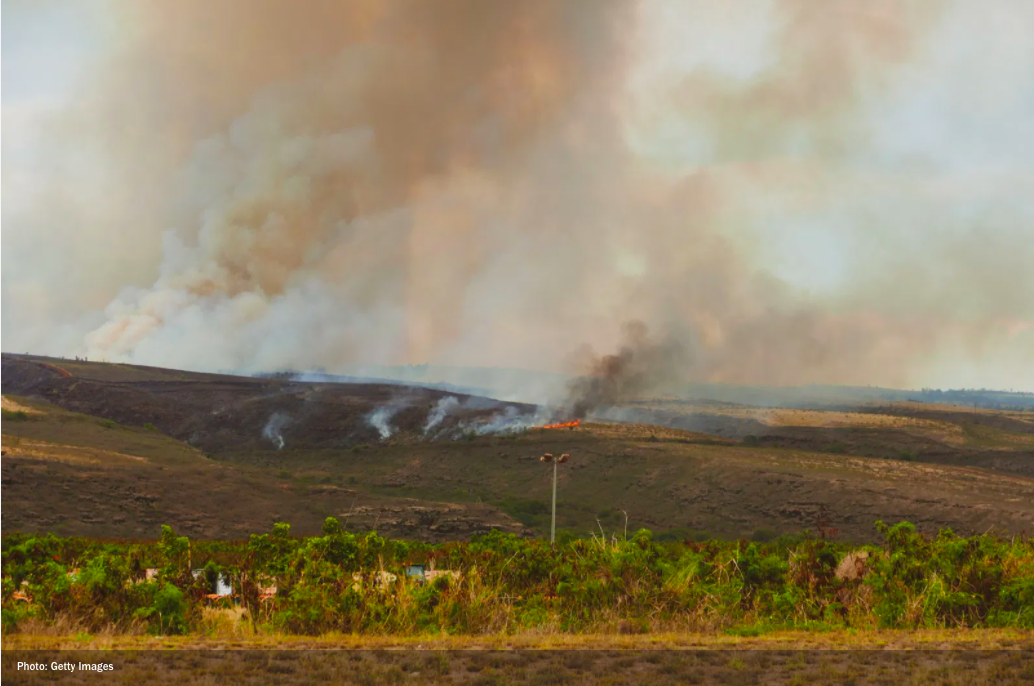Fires burned more than 30,000 acres of forest and brushland in both 2018 and 2019 – far more than any other year in more than a decade, according to the latest State of Hawaiʻi Data Book.
You have to go back to 2005 and 2007 to find years with comparable acreage ravaged by forest and brushland fires in Hawai‘i, according to annual figures provided by state Data Books.
Thirty-one individual fires in 2019 engulfed 32,124 acres of forest and brushland – a combined area almost as large as the island of Niʻihau.
Hawaiʻi has seen a spike in drought intensity since 2016, especially during the summers. The U.S. Drought Monitor, a service of the National Oceanic and Atmospheric Administration, showed a spike this past summer in areas of Hawai‘i categorized as D2.
The drought intensity scale is composed of five levels: D0, D1, D2, D3, and D4. The severe drought category is D2, which “corresponds to an area where crop or pasture losses are likely, fire risk is very high, water shortages are common, and water restrictions are typically voluntary or mandated,” NOAA says.
Such environments mean plants become fuel that only need a flame to set a landscape ablaze.
Wildland fires, which burn a greater proportion of Hawaiʻi land area compared to most Mainland states, place significant burdens on county, state and federal emergency management agencies.
Inflation and longer fire seasons nationwide have caused fire costs for the U.S. Forest Service and U.S. Department of the Interior to skyrocket. Fire budgets, especially in Hawaiʻi, have not kept up with the worsening conditions, according to the Hawaiʻi Wildfire Management Organization. At the Hawaiʻi State Division of Forestry and Wildlife, $900,000 has been budgeted for fire management; however the cost of hiring helicopters to suppress a single midrange fire can be over $300,000, according to the U.S. Department of the Interior.
Here is a list of forest and brushland acreage burned in recent years:
2019: 32,124
2018: 30,593
2017: 7,697
2016: 18,124
2015: 5,594
2014: 634
2013: 782
2012: 5,526
2011: 1,228
2010: 3,522
2009: 8,079
2008: 2,385
2007: 29,592
2006: 14,585
2005: 26,493

